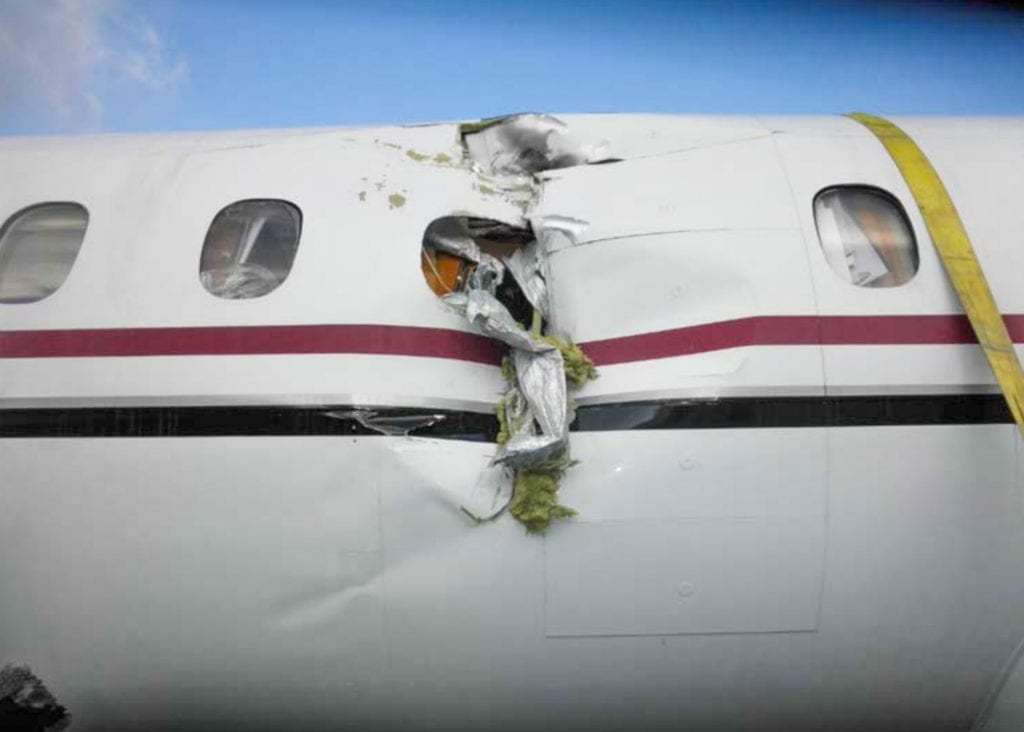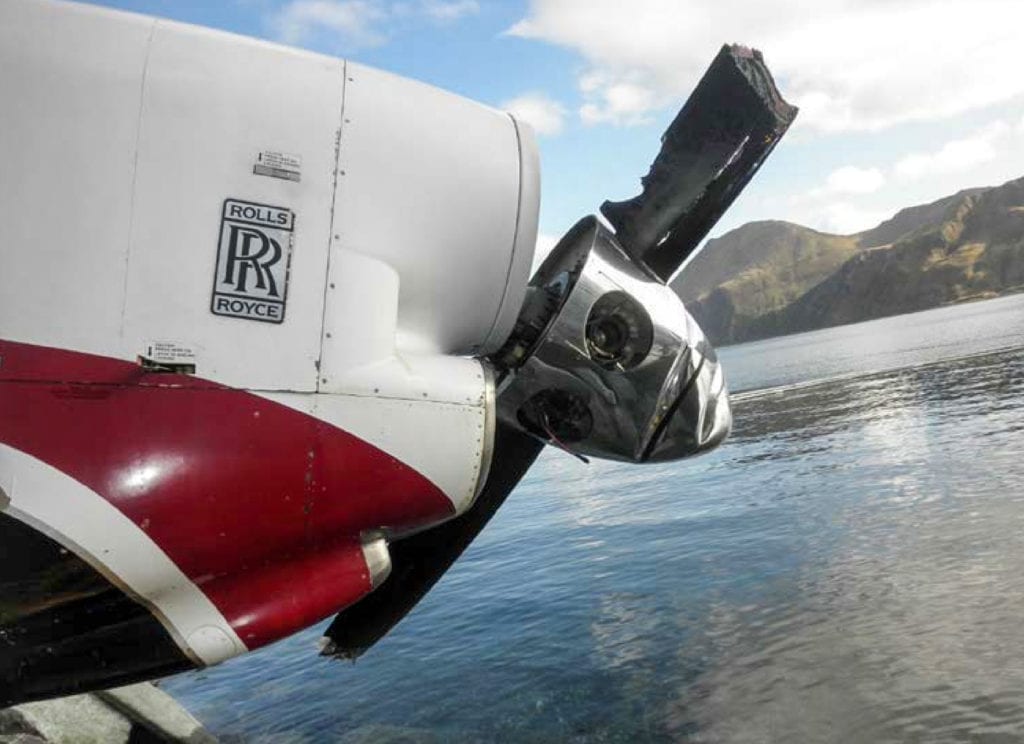
A deadly Unalaska plane crash landing took place amid rising winds, reports the National Transportation Safety Board. The accident took place around 5:40 p.m. Oct. 17 at Tom Madsen Airport, when PenAir flight 3296 left the runway and pieces of propeller blade pierced the fuselage. Passenger David Allan Oltman, 38, of Washington state, died later that evening of injuries sustained in the accident.
During an initial landing attempt, winds blew at 10 knots, according to a Nov. 15 NTSB investigative report. Winds rose to a stiff 24 knots as the Saab 2000 plane again attempted to land, leaving the runway and crashing through an approximately 3-foot-high chain-link fence.
The aircraft then crossed a ditch, impacted a large rock and crossed a public road, the NTSB reported. The aircraft’s left propeller struck a roughly 6-foot-high yellow, diamond-shaped road sign. NTSB investigators also recorded strike marks consistent with the right engine’s propeller tips contacting the ground near where the airplane came to rest, hanging off a shallow embankment over water.
“The flight crew reported that they attempted to steer the airplane to the right at the end of the runway to avoid going into the water,” the report said.
The plane’s left propeller was severely damaged in the accident, perforating the fuselage and displacing and damaging a seat inside. One propeller blade was “loosely stuck” in the plane’s structure external to the fuselage, the NTSB reported. Another, 57-inch-long, blade penetrated the fuselage and entered the cabin.

PenAir flight 3296 was seemingly forced off the edge of the runway by high winds, said an eyewitness quoted by the Associated Press.
The plane’s captain, who was acting as the flying pilot at the time of the accident, held an airline transport pilot certificate and had accumulated about 20,000 total flight hours, 101 hours of which were in the Saab 2000, the NTSB reported. The first officer, who was acting as the pilot monitoring, also held an airline transport pilot certificate, and had accumulated 1,446 total flight hours, 147 of which were in the Saab 2000.
Ravn Air Group, which owns PenAir, said in a statement that PenAir will continue to cooperate with the NTSB and cannot comment on the facts reported by the investigation so far.
Read previous Cordova Times coverage:
Oct. 17, 2019: 1 passenger dead in Unalaska plane accident
Oct. 19, 2019: Cordova swim team returns home after plane accident
Oct. 26, 2019: High schoolers recount deadly plane accident
Oct. 29, 2019: Unalaska mayor declares emergency as flights halt





